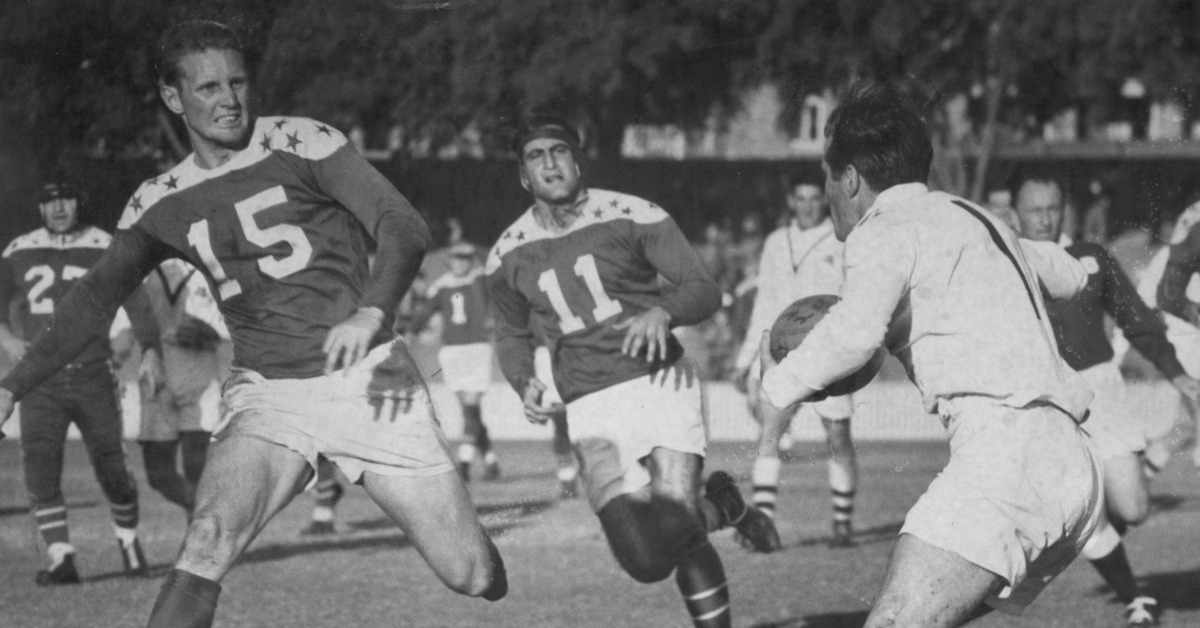Organiser, manager and second-rower Mike Dimitro brought 21 players with him for the American All Stars Tour of Australia and New Zealand in 1953. Dimitro was an elite American football player who had come to Australia during World War II and developed a keen interest in rugby league while being involved in services wrestling and boxing in Sydney.
His mission was to establish rugby league as a sport in the United States. On the Australian leg of the tour, 18 matches were held. In total, the Americans won three, lost 13 and drew two. The playing strip for the team was a royal blue jersey with red and white stars on the shoulders, and blue pants that had red and white stripes, although they changed to shorts after two matches.
Ten players chosen for the tour were star gridiron players, having played in the most famous college football game – The Rose Bowl. Some of these players had even appeared in Hollywood movies, including Sands of Iwo Jima, made in 1949 and starring John Wayne.
A few of the tourists had some experience playing rugby union. One player, winger Bill Albans, had represented the US twice at the Olympics and his best time over 100 yards was 9.5 seconds. It is generally accepted that he was the fastest man ever to run on to a rugby league field up to that time.
Kangaroo manager Norm ‘Latchem’ Robinson was seconded to the tourists as coach to help them with learning fundamentals. Co-captain Vince Jones said that the biggest thing they learnt from Robinson early on was the need to stay in set positions.
The visitors attended a Queensland vs NSW match and some Sydney club matches before the tour got under way. Interestingly, several Americans noted that Denis Flannery and Jack Rooney were injured in the interstate game and not replaced. They suggested that rugby league would be improved if replacements were allowed. Ed Deirjian, a winger, expressed surprise at the friendliness of the NSW fans towards the Queensland players.
The visitors used some thrilling tactics, the most exciting being the ability to throw long passes of 40 or 50 yards. They were too high to be intercepted and were extremely accurate.
However, they had two major problems – learning how to consistently cover defend, and a lack of reserves due to a growing number of injuries. The Australian hosts, not wanting the visitors to become demoralised, sometimes allowed ‘ring-ins’ in games to bolster the Americans. Al Kirkland, the Americans’ best player, stayed on in Australia and played 18 first grade matches for Parramatta in his one season in 1956.
